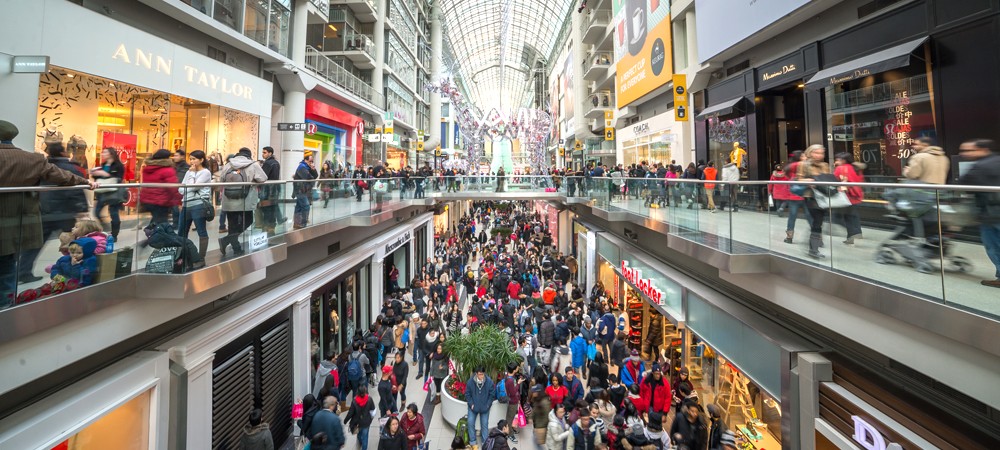Why Retailers Need Behavior Anomaly Detection to Fight Crime

Inflation isn’t the only problem gripping the retail industry. Crime and safety threats are another. A technology known as behavior anomaly detection can help make stores safer.
Crime and Safety threats on the Rise
The lifting of COVID-19 restrictions means more people are circulating publicly, which means retail storefronts are busier. Unfortunately, retailers and restaurants are also facing an increase in theft and behaviors that make shoppers and employees feel less secure, such as chronic loitering, panhandling, and drug use. Even worse, violence against employees is on the rise.
FBI data shows that the number of aggravated assaults that took place in restaurants increased by 60% from 2018 to 2020, and the number in grocery stores increased by 73% during the period.
What Can Retailers Do?
The risks to safety hurts businesses and intimidates consumers. Forty-four percent of 1,005 adults surveyed in July 2022 said they were more fearful to be in public because of bad behavior and rising violence, up from 39% in March, according to a national online survey by food-service research firm Lisa W. Miller & Associates LLC. Starbucks recently announced it is closing 16 stores, citing safety concerns. In 2021, Kroger cited organized theft among the factors pressuring its profit margins for the first time, and CVS is among the many other retailers having their profits squeezed by a spike in theft.
What can retailers do? Many are beefing up security and training employees. Grocery trade Group FMI recently reported that U.S. grocers are working to protect staff and operations in response a rise in crime. About 72% of 18 food retailers representing over 12,000 stores surveyed by FMI said they have plans in place to deal with violence prevention, while 88% said they are ready to deal with robberies.
But they need a lot of help. A technology known as behavior anomaly detection can play an important role. Behavior anomaly detection consists of the use of computer vision and pattern recognition to keep stores safe, fight theft, and improve customer service. The key components:
- Computer vision, a form of artificial intelligence (AI) that makes it possible for computers to record visual data such as pictures and video. Computer vision gives store managers real-time insight into everything that is going on in a store to a level of detail that typical security cameras miss. It’s a smart technology that can observe and report more than even an ordinary security camera can, such as when a product has been removed from a shelf and what quantity.
- Pattern recognition consistently detects behavioral anomalies, such as people in stores who are acting suspiciously (say, someone trying to steal versus someone who is simply picking up a product to examine it more closely).
Behavior anomaly detection helps employees protect stores in three major ways:
- Fighting theft. Behavior anomaly detection observes suspicious behaviors such as someone trying to distract an employee at the checkout lane, making multiple purchases, spending too much time going through store inventory, or slipping a product into their purse or overcoat.
- Keeping the store safe. Threats to store safety can range from people behaving violently to accidents occurring. Behavior anomaly detection can help a store manage all types. For example, store associates don’t always spot potential hazards such as liquid spilled on the floor or improperly stocked merchandise teetering into an aisle. Behavior anomaly detection can find those problem spots in every nook and cranny of a store and alert a store associate to take corrective action.
- Improving the customer experience. Behavior anomaly detection can alert a store associate about a customer who might need assistance, such as someone attempting to lift a large box of merchandise. Or perhaps too many store associates are clustered in one area of the store, missing opportunities to provide more complete throughout the entire space. With behavior anomaly detection, a store manager can ensure that store associates focus more of their time assisting customers and helping when someone might need special assistance.
At the same time, behavior anomaly detection won’t work effectively without proper training. The AI needs to be trained with data to know what to look for. Moreover, the technology needs to be used in a way that protects consumer privacy and does not unfairly profile anyone. But with the right training by a diverse team of humans, behavior anomaly detection can be a powerful ally to retailers.
How Centific Can Help
Behavior anomaly detection can help retailers fight a growing problem and ease the burden on stores associates to fight bad behavior themselves. Centific helps retailers do that with our Scout platform. Scout provides personalized and prescriptive analytics in real-time, intuitively alerting a store’s team to events before they escalate.
Scout's human-in-the-loop foundation mitigates bias through comprehensive AI training data sets,and leverages Centific's global team of risk mitigation experts for real-time situational analysis, decreasing false positives. As Scout's knowledge of patterns grows, they are shared with users through the exclusive and secure pattern recognition network.
Whether it’s understanding a particular customer's behavior, detecting fraud at self-checkouts, or identifying on-premises hazards, Scout empowers retailers to act with confidence in real-time.
To learn more, contact Centific.
